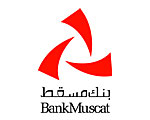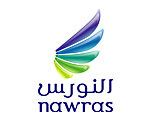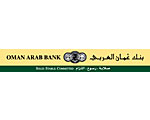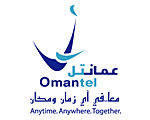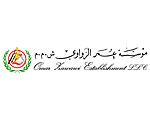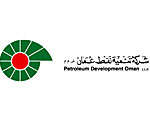Anders Blauenfeldt, Business Development Director, Nawras
URL: www.nawras.com.om
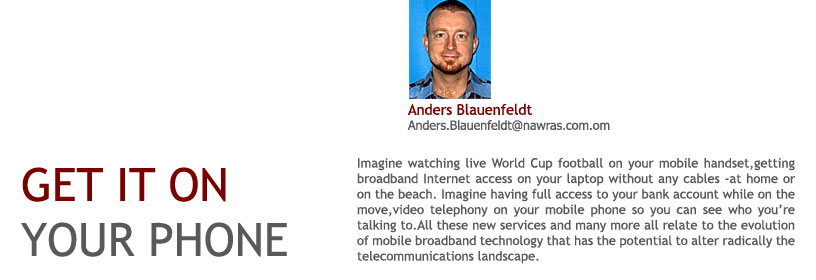
The technology behind mobile broadband can be divided into two broad areas - in the red corner we’ve IP and LAN technologies growing out of the computer network arena which are becoming more mobile and in the blue corner we’ve the mobile networks growing out of the voice and SMS arena which are becoming more IP and data based.
Examples of the first category include the advent of WLAN, or Wi-Fi as it’s become known, a technology that’s embedded in recently manufactured laptops. WLAN was developed as a wireless low range extension of the local area computer network for office and home use much like the wireless phones many of us have used for years. To d a y, publicly available WLAN has emerged as hotspots or Wi-Fi Zones. The WLAN standard is organised via the international organisation IEEE and the same standardisation body also works on new long range wireless network standards, one to look out for is WiMax which is expected to deliver a higher range at high bandwidth of several Mbit/s.
Examples of the second category include the advent of next generation mobile networks which have been launched across the world, again using different names such as EDGE , UMTS , HSDPA - these are generally referred to as third generation mobile networks or 3G for short. More than 30 countries have launched 3G, offering millions of people access to high mobile broadband networks. HSDPA promises to offer commercial products at 2 Mbit/s or more.
Taking a look at the situation and development in Oman, the GPRS service was launched by Omantel in 2004, allowing users to access the Internet via the mobile network at speeds of around 30 kbit/s slightly slower than a normal modem connection. The new mobile operator Nawras - has launched services using a next generation mobile network including full support for GPRS as well as EDGE, this allows users to access the Internet via the mobile network at speeds of around 100 kbit/s 3 times the speed of GPRS. Although this won’t stream video in DVD quality to your TV it’s certainly enough for the technology innovators and IT companies in Oman to start looking at new products and applications for PCs as well as mobile handsets that utilise the new network.
Another issue that needs to be considered is the development of mobile handsets, pocket PCs and laptops that support the new network standards. In general, development hasn’t met early expectations with manufacturers unwilling to invest in launching handsets that support the new networks because network operators aren’t willing to invest in new network technologies as long as handsets aren’t available on the market, i t ’s all rather catch 22. However, progress is being made and major manufacturers have launched EDGE and UMTS handsets as well as PC cards that support the networks. It’s expected that the development of rich mobile handsets, pocket PCs and laptops will be an important driver for new services on mobile broadband networks. With large colour screens supporting bigger pictures and video as well as more computational power and storage, the foundation is there for customers to start utilizing mobile broadband.
With the introduction of mobile broadband networks, mobile operators will move towards the distribution of media content and offer data products that support traditional voice and text communication. This will result in a much wider selection of services offered by mobile operators which will increase spend on the monthly mobile bill as the mobile is used to cover picture and video communication, entertainment, e-mail and Internet access. Such a trend will undoubtedly change value chains as more revenue flows into IT, media and telecommunication with mobile broadband supporting this movement. What the mobile broadband value chain will look like in Oman is still being defined, but what we can expect is exciting times.


